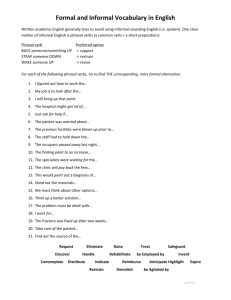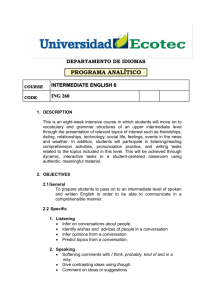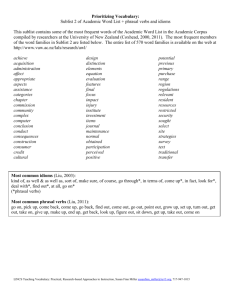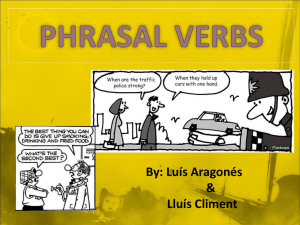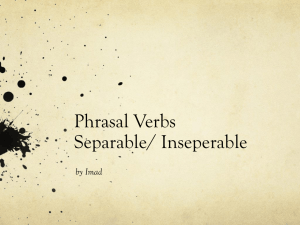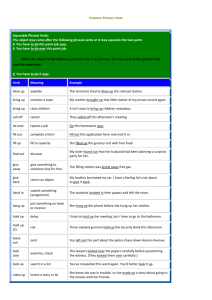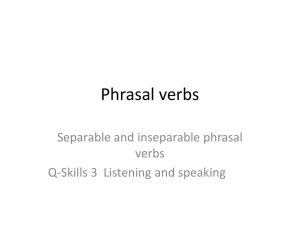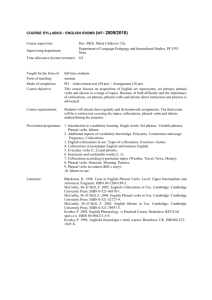Phrasal Verbs Introduction
advertisement
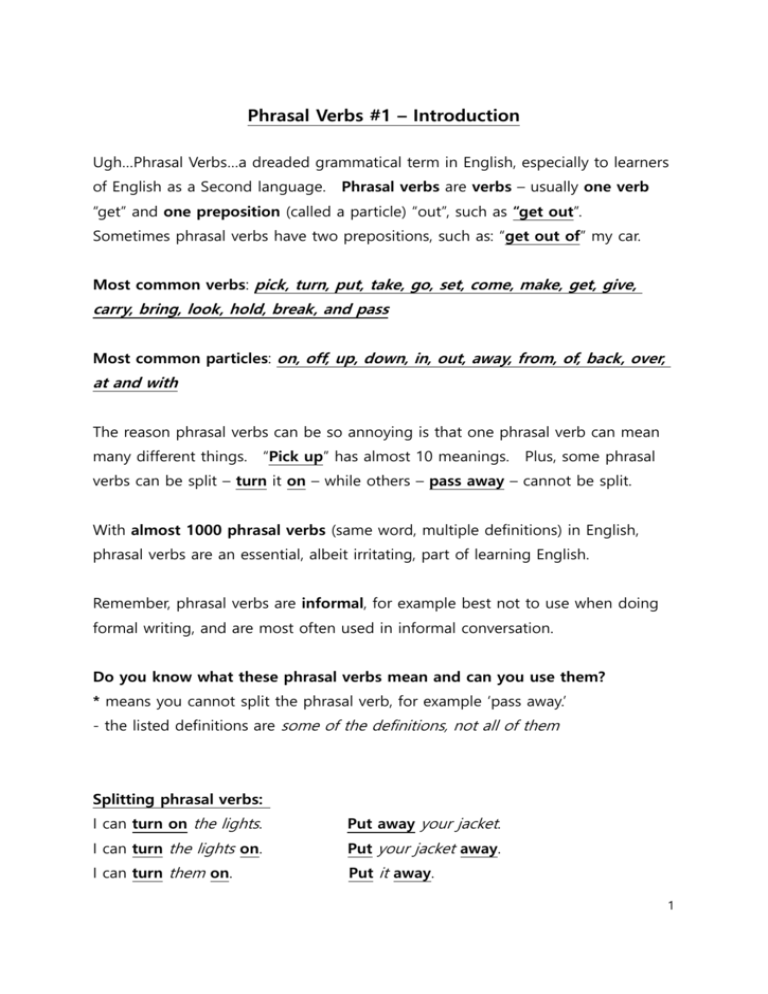
Phrasal Verbs #1 – Introduction Ugh…Phrasal Verbs…a dreaded grammatical term in English, especially to learners of English as a Second language. Phrasal verbs are verbs – usually one verb “get” and one preposition (called a particle) “out”, such as “get out”. Sometimes phrasal verbs have two prepositions, such as: “get out of” my car. Most common verbs: pick, turn, put, take, go, set, come, make, get, give, carry, bring, look, hold, break, and pass Most common particles: on, off, up, down, in, out, away, from, of, back, over, at and with The reason phrasal verbs can be so annoying is that one phrasal verb can mean many different things. “Pick up” has almost 10 meanings. Plus, some phrasal verbs can be split – turn it on – while others – pass away – cannot be split. With almost 1000 phrasal verbs (same word, multiple definitions) in English, phrasal verbs are an essential, albeit irritating, part of learning English. Remember, phrasal verbs are informal, for example best not to use when doing formal writing, and are most often used in informal conversation. Do you know what these phrasal verbs mean and can you use them? * means you cannot split the phrasal verb, for example ‘pass away.’ - the listed definitions are some of the definitions, not all of them Splitting phrasal verbs: I can turn on the lights. Put away your jacket. I can turn the lights on. Put your jacket away. I can turn them on. Put it away. 1 None-splitting phrasal verbs: I can’t stand children. (Transitive – needs an object) I can’t stand them. My grandmother passed away. (Intransitive – doesn’t need an object) 2
